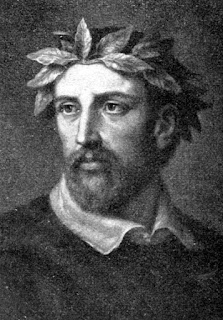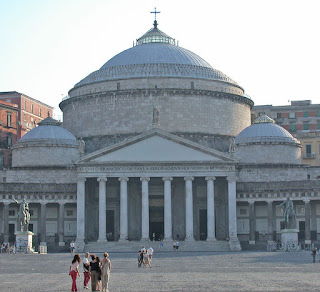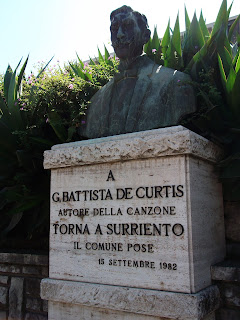Troubled Renaissance writer came back to Sorrento
 |
| Torquato Tasso, as depicted by a German magazine in 1905 |
Tasso’s most famous work was his epic poem Gerusalemme Liberata (Jerusalem Delivered) in which he gives an imaginative account of the battles between Christians and Muslims at the end of the first crusade during the siege of Jerusalem.
He was one of the most widely read poets in Europe and his work was later to prove inspirational for other writers who followed him, in particular the English poets Spencer and Byron.
The house where Tasso was born on 11 March, 1544 is in Sorrento’s historic centre, a few streets away from the main square, Piazza Tasso, in Via Vittorio Veneto.
It now forms part of the Imperial Hotel Tramontano, where the words for the beautiful song, Torna a Surriento, were written by Giambattista De Curtis while he was sitting on its terrace in 1902.
Tasso travelled about in Italy constantly during his 51 years but came back to Sorrento towards the end of his life to visit his beloved sister Cornelia, at a time when he was deeply troubled with mental health problems.
 |
| The statue of Torquato Tasso in Bergamo's Piazza Vecchia |
Tasso was the son of a Bergamo nobleman, Bernardo Tasso, who was also a poet. He spent two periods only in his father’s native city, but is known to have written about Bergamo with affection.
While his father was resident poet at the Ducal Palace in Urbino, Torquato studied alongside Francesco Maria della Rovere, the heir to the Duke. He was later sent to study law in Padua but chose to write poetry instead.
Tasso was to spend many years in Ferrara at the Castle owned by the Este family where he fell in love with a lady in waiting and wrote love sonnets to her.
He suffered from the jealous behaviour of the other courtiers, which led to him developing a persecution mania and suspecting he was going to be poisoned. Eventually he escaped and made his way to Sorrento to visit his sister in her house in the historic centre between the main street and the sea.
After some further difficult years during which Tasso was confined to a madhouse by his patron, the Duke of Urbino, and later wandered from city to city without settling, he was invited to Rome by the Pope.
Tasso died in Rome in 1595 when he was just about to be crowned poet laureate by Pope Clement VIII.
 |
| Sorrento's Piazza Tasso |
Although Tasso travelled all over Italy during his life, he was born in Sorrento and the main square has been named after him. Piazza Tasso is right at the hub of Sorrento, in the middle of the main shopping street, Corso Italia, and looking out over Marina Piccola, Sorrento’s port. Surrounded by bars and restaurants, the square has stops for the local buses and a taxi rank. It is also the resting place for the horses that pull the carriages that can be hired for sightseeing.
 |
| The Caffè del Tasso in Bergamo was renamed in honour of the poet |
Nearly 100 years after Tasso’s death, a statue of him was erected in a corner of Piazza Vecchia in Bergamo’s historic upper town. The bar next to it subsequently changed its name to Caffè del Tasso. Dating back to at least 1476, the bar would have been known during Tasso’s life as Locanda delle Due Spade (Two Swords Inn.) In 1681 when the statue of the poet was erected, the bar’s name was changed to Al Torquato Tasso Caffè e Bottiglieria (Torquato Tasso Café and Wine Shop).
More reading:
Dante Alighieri and the Divine Comedy
Petrarch - the poet who inspired the Italian language
How Giambattista De Curtis was captivated with beauty of Sorrento
Also on this day:
1847: The birth of wartime politician Sidney Sonnino
1851: Verdi's Rigoletto performed for first time
1924: The birth of mental health pioneer Franco Basaglia
Selected books:
Gerusalemme Liberata, full English translation
Home







